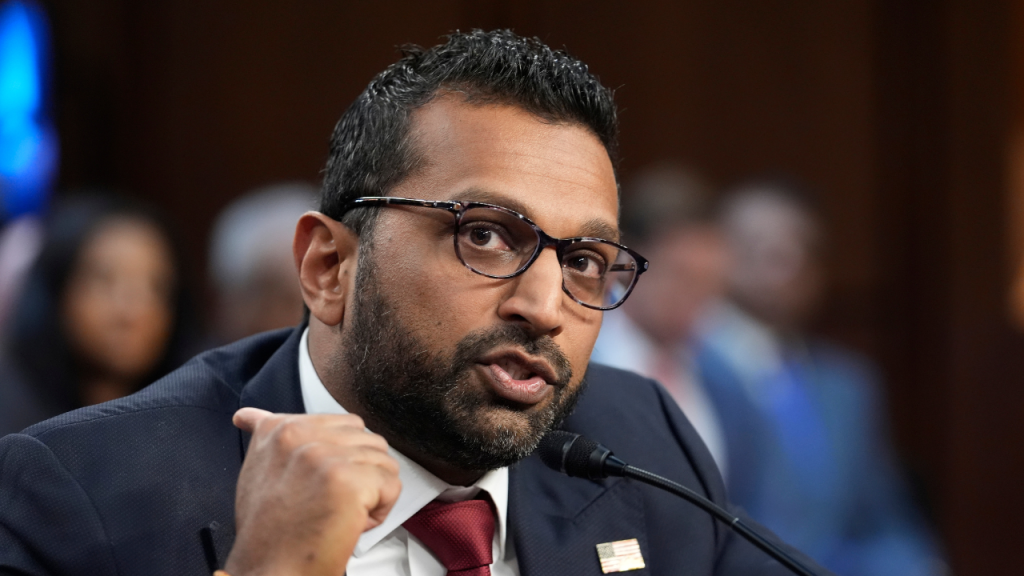U.S. officials have raised concerns about potential threats emanating from the northern border with Canada. In recent testimony before the House Intelligence Committee, FBI Director Kash Patel indicated that adversaries like China and Russia are adjusting their strategies due to improved security measures at the southern border. This shift presents new security challenges that may put the northern border at risk.
| Article Subheadings |
|---|
| 1) Shifting Threats at the U.S. Borders |
| 2) Impact of Enhanced Security Measures |
| 3) Trends in Illegal Crossings |
| 4) The Northern Border’s Vulnerability |
| 5) Legislative Responses and Future Directions |
Shifting Threats at the U.S. Borders
During testimony before lawmakers, Kash Patel warned of a noticeable shift in focus from U.S. adversaries, particularly China and Russia, towards the northern border with Canada. This transition is attributed to the “effective resolution” of the ongoing crisis at the southern border. These adversaries are reportedly reallocating resources to exploit perceived vulnerabilities in the nation’s northern defenses.
Patel’s remarks highlight an alarming trend in border security, indicating that while the southern border remains a point of contention and concern, the effectiveness of new measures there may inadvertently incite a wave of threats from the north. This presents a multi-faceted challenge for U.S. officials tasked with ensuring national security.
Impact of Enhanced Security Measures
The implementation of rigorous security measures at the southern border has yielded dramatic results. Since President Donald Trump took office, recorded encounters of illegal crossings by U.S. Customs and Border Protection (CBP) have decreased significantly. Reports suggest that this has led to a plummet of over 90% in crossing encounters in numerous sectors of the southern border since the previous year.
Patel noted that despite some remaining activities at the southern border, enhanced security has made it increasingly challenging for known or suspected terrorists to infiltrate the nation. U.S. military troops have been deployed to assist in these efforts, bolstering surveillance and presence along the southern perimeter, which has inadvertently drawn adversaries’ attention northward.
Trends in Illegal Crossings
Statistics revealed by Patel shed light on a concerning trend: between 2022 and 2025, approximately 178,000 Chinese nationals attempted to breach the southern U.S. border. Particularly alarming was the increase from just 450 encounters in 2022 to over 24,000 in 2023, showcasing a drastic escalation of attempts. This marked a striking increase of more than 5,200% within a single year, indicating a shift in migrant patterns and motivations.
While fentanyl and other dangerous substances remain a concern, there is a growing acknowledgement that illegal crossings are not solely confined to individuals from Central and South America. Rather, individuals from countries outside the Western hemisphere are increasingly attempting to gain entry into the U.S., heightening the complexity of the migration crisis.
The Northern Border’s Vulnerability
The newfound focus on northern border security reveals a potentially dangerous shift in operations by foreign adversaries. Patel warned that as attention intensifies on the fortified southern border, adversaries such as China and Russia may begin to utilize similar tactics on the less monitored northern boundary. The FBI’s inability to swiftly address this evolving threat may expose significant security gaps, leading to risks associated with illegal entries and potential terrorist activities.
Patel’s comprehensive warning does not merely highlight a single border’s security concerns but underscores a broader national security issue. In light of the northern border’s unique challenges, policymakers will need to consider enhanced surveillance, increased military presence, and improved coordination between local and federal enforcement agencies.
Legislative Responses and Future Directions
In response to these emerging threats, lawmakers are expected to evaluate existing policies more critically. As security dynamics evolve, discussions about resource allocation and border management strategies are becoming increasingly necessary. There is a growing consensus among officials that comprehensive approaches must be instituted to assess and address vulnerabilities across both borders adequately.
Future directives may focus on increasing funding for border security operations, expanding the resources dedicated to intelligence-gathering efforts, and fostering cross-border collaborations with Canada to mitigate potential threats. Long-term solutions will require bipartisan cooperation to effectively enhance national security while maintaining humanitarian considerations for genuine asylum seekers.
| No. | Key Points |
|---|---|
| 1 | FBI officials indicated that adversaries are shifting their focus to the northern U.S. border. |
| 2 | Enhanced security measures have led to a significant drop in illegal crossings at the southern border. |
| 3 | There has been a staggering rise in illegal crossings by Chinese nationals. |
| 4 | Patel warned that the northern border could become a target for potential threats. |
| 5 | Lawmakers may need to re-evaluate policies and resource allocation to address border vulnerabilities. |
Summary
The shifting security landscape at the U.S. borders reflects a complex interplay of increased measures at the southern border prompting potential threats from the north. With alarming trends in illegal crossings and a strategic reassessment by foreign adversaries, national security measures must evolve. Policymakers are urged to act quickly and comprehensively to mitigate these evolving challenges while maintaining a balanced perspective on humanitarian concerns.
Frequently Asked Questions
Question: What are the main concerns regarding the northern U.S. border?
The primary concerns involve potential threats from adversaries like China and Russia, who may exploit vulnerabilities as attention shifts away from the well-secured southern border.
Question: How has southern border security changed over recent years?
Since the 2022 inauguration of President Trump, southern border security has intensified, leading to a reported 90% reduction in illegal crossings in several sectors due to enhanced surveillance and military troop deployments.
Question: What trends have been observed in illegal crossings?
There has been a significant increase in illegal crossings by Chinese nationals, with reports indicating over 24,000 attempts in 2023, marking a dramatic rise from previous years.


